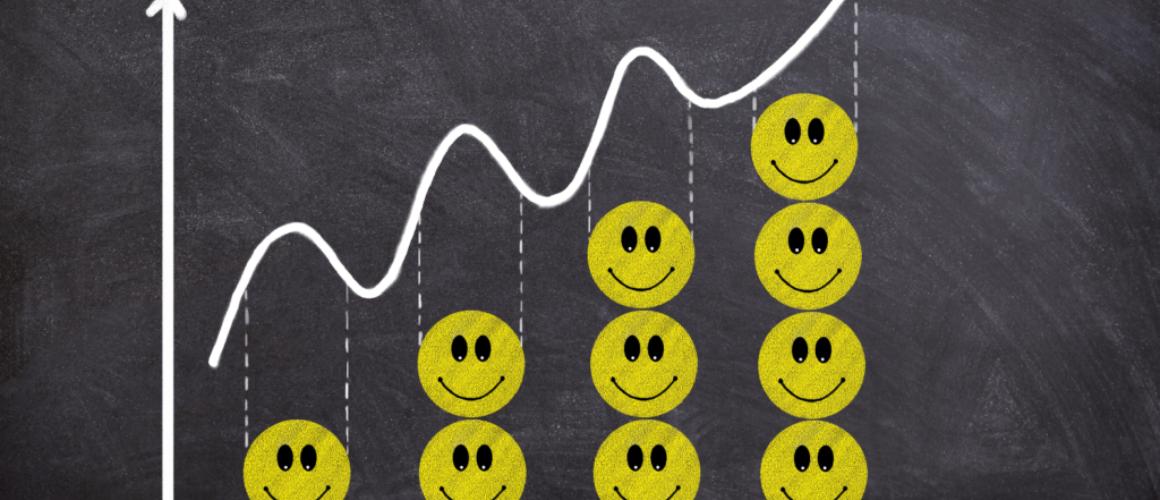A Practical Guide to Mastering the Mental/Physical Health Connection
Mental and physical health interact in self-strengthening spirals. It’s up to each of us to determine whether they spiral up or down.

Have you ever noticed how much easier it is to look after yourself when life feels good? It’s a powerful, self-strengthening effect: Enjoy life, do more healthy things, experience better health, enjoy life even more.
Of course, there’s a flip side too. Depression, frustration, and anxiety often trigger self-destructive behavior like binge eating, drinking, or watching. The resulting unhealthy body (and guilt) only make these unhelpful feelings worse, completing the vicious cycle.
This article takes a closer look at the interaction between mental and physical health. We’ll build an understanding of the most important connections and then distill this knowledge into a practical strategy for lifelong, holistic health.
Mental/Physical Health Connections
There are many fascinating bidirectional links between mental and physical health. Let’s take a brief tour of the most important ones.
The gut-brain axis
This interesting connection between two seemingly unrelated parts of our bodies has received plenty of press lately. On the off chance you haven’t heard of it, it’s all about the trillions of bacteria that live in our guts and the effects they have on mood and mental health.
This “microbiome” produces all sorts of important chemicals in the body, including neurotransmitters for healthy and positive brain function. They love healthy, whole foods with plenty of fiber, and they wither in a typical Western diet filled with added sugar, saturated fats, and excess salt. Many see our sick microbiome as a contributing factor to the high incidence of mental health issues in today’s affluent Western society.
Exercise
Movement produces a range of positive biochemical effects in the body, including a near-instant release of feel-good hormones. And there are several fun ways to boost this effect, such as exposure to nature, sunlight, and social contact through exercise.
Exercise is also a great stress reliever. A body full of fight-or-flight hormones needs to take action, and there is no better way to release all this stressful energy than doing some healthy exercise.
Sleep
Like the gut-brain axis, sleep’s role in mental health has only recently started reaching a broad audience. It strongly affects general emotional stability and our ability to handle stress and anxiety. Sleep deprivation also causes unhealthy food cravings and drains motivation to exercise.
This effect gets a further boost from the fact that healthy people enjoy better sleep. Obesity and sedentary living are both associated with a broad range of sleep disturbances. Other chronic aches and pains from poor health will obviously also make it harder to get that vital slumber.
Body image
A negative body image is a major contributor to psychological challenges today. On the flip side, there are few better feelings than seeing a carefully nourished body in the mirror and thinking: “Yep, that’s me. I did that.”
This daily moment of pride and satisfaction soon grows into a healthy self-image only accessible to those who are comfortable in their own skins. Life looks much better from that vantage point.
Healthy pleasure
Healthy living is not the constant stream of sacrifice and deprivation it’s often made out to be. Far from it! For example, a mind unburdened by sugar desensitization deepens culinary enjoyment and vanquishes the persistent pestilence of sugar cravings. Similarly, a fit and agile body is the gateway to a world of joyous physical activity.
It may be hard to fathom at first, but here’s the truth: Unhealthy living involves much more severe self-deprivation than healthy living.
Self-strengthening effects
When you love your body, your actions will ensure it loves you back ten-fold. A healthy body gives you access to a wide range of exclusive healthy pleasures, all serving to effortlessly maintain excellent health.
This principle applies all around. Happy people with a healthy microbiome are less likely to consume the kind of junk that corrupts their gut health. Fit people have the energy to move their bodies regularly and the skills to do it enjoyably. A well-rested mind is less likely to succumb to all those unhealthy temptations that disrupt sleep.
Once this mental/physical health cycle is firmly in place, it sustains itself beautifully. But the opposite is also true: Breaking out of the vicious self-sustaining combo of poor mental and physical health requires a Herculean effort. So, let’s lay out a clear strategy to get this done.
The Vital Paradigm Shift
We now know that mental and physical health are closely linked. But we should also recognize that both go through natural cycles, especially on the mental side. We all have good days and bad days, often for no apparent reason. These natural variations can be annoying, but the right mindset can transform them into a great asset.
Does the following situation sound familiar? You suddenly receive a dose of motivation from the universe and enthusiastically start a new diet or exercise regime. But soon after, life throws you one of its typical curveballs, and you drop right back into the worst of your old habits.
Here’s the problem: We tend to waste our periods of positivity and drive on chasing our health goals directly. This is a big mistake because it inherently means we only get to do good when we feel good. And no one feels good all the time (especially not someone following this pattern).
The solution is simple: Instead of spending a positive mental state on forcing yourself to do healthy things, invest it in building environments that make healthy living come naturally. This is a vital intervention because today’s urban jungles with all their junk food, mechanized transport, junk media, and overwhelm seem purpose-built for poor health.
Repairing this powerful environmental influence is key to long-term health and happiness. Each element you add to your healthy environment will boost the virtuous cycle in future good times and interrupt the vicious cycle in future bad times. As the virtuous cycle slowly gets the upper hand, you’ll get more and more good periods to enjoy and invest in better environments. And that’s when the joy of healthy living really starts blooming.
So, let’s compile a handy list of environment-building investments for when you get your next dose of motivation for healthy living.
Constructing Your Healthy Environment
The ideas below will all contribute to making healthy living great fun in good times and sustainable in bad times. Next time some good times roll around, give it a go! And when you feel down, don’t be too hard on yourself. Instead, put your healthy environment to the test by doing whatever you need to do to get out of your funk. Your natural actions will reveal any weaknesses in your environment that need fixing during your next motivation boost.
One quick caveat: If you suffer from a mental illness that keeps the good times away permanently, be sure to seek out proper medication and therapy. As my mom’s story of battling depression shows, these solutions are needed to create the mental space and energy required to implement the lifestyle design interventions listed below.
A home full of gut-healthy foods
A healthy food environment is the first step to a mentally and physically active life. First and foremost, your home should not contain any addictive temptations that threaten your health. Instead, fill your kitchen with these healthy, gut-friendly foods.
Second, you’ll need all the ingredients, skills, and equipment to turn gut-healthy food into enjoyable and practical meals. If healthy eating is a drag, you’ll never escape the clutches of the junk-food industry.
Action step: The best building blocks for this environment are quick and delicious gut-friendly dishes you can prepare at home. So, each time motivation strikes, be sure to try an interesting new recipe. Before long, healthy eating will be so easy and enjoyable that it happens all by itself (even during tough times). Here are some of my favorite breakfast and lunch/dinner ideas as examples.
Fun ways to move your body
We now know beyond a shadow of a doubt that exercise is great for mental and physical health. Sadly, most of us live in concrete jungles built for cars and not for people, killing the two most natural forms of exercise: personal transportation and interactions with nature.
Escaping this unfortunate environment is by far the best solution. And it gets no better than establishing a practical car-free lifestyle close to nature. Setting up this environment remains the smartest thing I’ve ever done.
Action step: Moving to the ideal location is the best possible action, but it will be impractical (in the short term) for most. The next best action step is to experiment with different fun ways of moving your body (there are hundreds of options). And what if the thought of sport totally turns you off? Well, then it’s best to invest your motivation in finding ways to spend more time in nature. It really is great for well-being.
A consistent sleep schedule
The sleep deprivation epidemic is costing the world dearly, both in terms of mental and physical health. The starting point to ridding your life of this debilitating problem is establishing a consistent sleep schedule and sticking to it (even during weekends).
Getting up at the same time each day is most critical, and a fully automated morning routine is the perfect enabler for this wonderful habit. It also brings bonus benefits in terms of productivity and relationships. If you can work in a nap during your natural afternoon energy dip, all the better.
Action step: First, if you’re still in denial about the importance of sleep, please take 10 minutes to read this post (or better yet, buy the book). Then, you should have the drive to use your next bout of motivation to add a new element to your morning routine. Give it two weeks to prove its worth, and then see if it sticks around without costing further willpower. Keep experimenting and building until your ideal routine emerges.
Protection against self-destruct triggers
What triggers you to poison your gut, let your body stagnate for hours on end, or snooze way past your optimal wake-up time? Next time any of these things happen, stop, take stock of your feelings, and do your best to identify the root cause and the main trigger for this damaging behavior.
For example, eating in front of the TV is a major self-destruct trigger for me. It totally deactivates my natural satiety response, getting me to binge terribly. Hence, I drew up a contract forcing me to pay a sizable sum to charity every time I fall into this costly trap. Today, it almost never happens.
Action step: Make a plan to eliminate your biggest self-destruct trigger once and for all. It won’t be easy, so don’t be discouraged if your first few attempts fail. Keep learning about yourself and trying new solutions. One powerful strategy to investigate is actively replacing unhealthy habits with better alternatives like these seven wholesome indulgences.
A healthy identity
Last but not least, we get to something a little more abstract. The single best way to cement healthy habits is to make them part of who you are. Building such an identity while surrounded by unhealthy temptations and unhealthy people is no easy task. But it can be done.
My healthy identity rests on several pillars. The oldest one is my 12-year streak of never getting sick. Next, I merged my healthy identity with my deep concern for sustainability by identifying the many ways in which healthy living makes the world a better place, not least avoiding the massive social costs of empty calories and poor sleep habits. Health also became a central pillar in the creative freedom I worked so hard to achieve. Lastly, I built the hedonic case for healthy living to finally bury the idea that a healthy lifestyle should involve loads of sacrifice.
Action step: What does healthy living mean for you? Hint: It should be more than just looking good in a swimsuit. Next time inspiration comes along, direct it towards this key question and use the answers to start constructing your own healthy identity. It offers a lifetime membership to the beautiful mental/physical health virtuous cycle.
Closing Thoughts
Mental and physical health are closely interlinked. As such, they can make each other spiral up or spiral down. Of course, spiraling up makes life a whole lot more fun (and a whole lot longer) than spiraling down.
We need only one key paradigm shift to make sure we spiral up: Use any natural bursts of inspiration to build an environment where healthy actions come naturally (instead of wasting them on chasing health directly). Such an environment will make healthy living awesome during good times and sustainable during bad times.
The ideal healthy environment will look different for each individual, but there are some general guidelines. Here’s a quick recap:
- Fill your home with gut-healthy food. Food creates mood. Looking after your microbiome will give you the positive mental state that makes healthy living easy.
- Learn to really enjoy moving your body. Exercise is the healthiest natural high out there. There are hundreds of options, so there must be a solution for you. Getting out in nature makes it even better.
- Prioritize sleep. Chronic sleep deprivation degrades every aspect of life, including mental and physical health. Don’t do this to yourself. It’s never the right solution.
- Destroy your self-destruct triggers. We don’t destroy our mental and physical health because we want to. There is always a deeper reason. Find it, fix it, and enjoy life without it.
- Build a healthy identity. If there’s one surefire way to live healthily ever after, it is to make healthy living part of who you are. Figure out what health means to you and build your identity around that.
May you enjoy a beautiful life gliding effortlessly upwards on the virtuous mental/physical health spiral! 😀

































